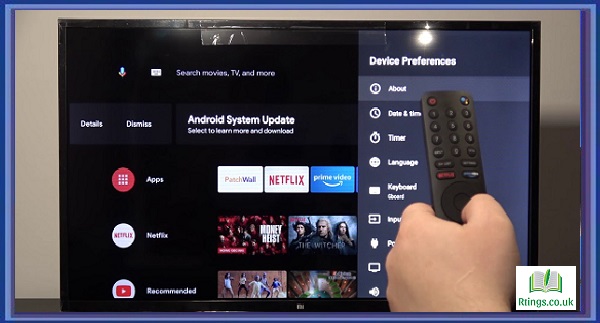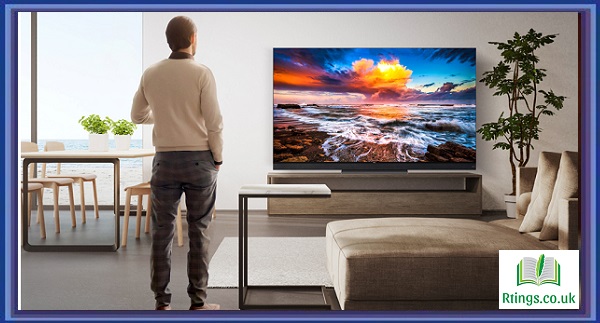Television has become an essential part of our daily life, and with the advancement of technology, the sizes of TVs have been increasing. The size of a TV is measured diagonally from one corner of the screen to the opposite corner, and the most popular TVs are 32-inch, 40-inch, 50-inch, and 55-inch. This article will focus on a 43-inch TV and discuss its size, features, and advantages.
What is a 43-inch TV?
A 43-inch TV is a mid-sized television with a diagonal screen measurement of 43 inches or approximately 109 centimeters. This means that the screen is 43 inches from one corner to the opposite corner diagonally. It is smaller than a 50-inch or 55-inch TV but larger than a 32-inch or 40-inch one. The physical size of a TV can vary depending on the brand and model, as some TVs may have thinner bezels or a slimmer design.
Dimensions of a 43-inch TV
The dimensions of a 43-inch TV depend on the brand and model. However, the average dimensions of a 43-inch TV are approximately 38 inches wide and 22 inches high, including the bezel. The depth of a TV can also vary, but it typically ranges from 2 inches to 4 inches.
Screen Size
The screen size of a 43-inch TV is measured diagonally from one corner to the opposite corner of the screen. This means that the actual size of the screen is 43 inches. However, the screen’s aspect ratio can vary, affecting the screen’s width and height. Most modern TVs have a 16:9 aspect ratio, meaning that the screen’s width is 1.78 times the screen’s height. Therefore, the width of a 43-inch TV screen is approximately 37.5 inches, and the height is approximately 21 inches.
Advantages of a 43-inch TV
- Ideal for Small Rooms: A 43-inch TV is an excellent choice for small rooms as it can provide a cinematic viewing experience without taking up too much space. It can be mounted on a wall or a TV stand, making it a versatile option for any room.
- Affordable: A 43-inch TV is more affordable than larger screen sizes, making it a popular choice for budget-conscious consumers.
- Better Viewing Experience: A 43-inch TV can provide a better viewing experience than smaller TVs. It is suitable for watching movies, sports, and playing video games.
- Energy Efficient: A 43-inch TV consumes less power compared to larger TVs. It can help to reduce your electricity bills, making it an energy-efficient option.
Factors to Consider When Choosing a 43-inch TV
-
- Screen Resolution: The screen resolution of a TV is the number of pixels on the screen. A higher screen resolution can provide a clearer and more detailed image. A 43-inch TV typically has a resolution of 1080p or 4K. A 4K resolution provides four times the number of pixels compared to a 1080p resolution, resulting in a more immersive viewing experience.
- Viewing Distance: The viewing distance is between the TV and the viewer. It is essential to choose a TV size based on the viewing distance. For a 43-inch TV, the ideal viewing distance is between 6 to 9 feet. Sitting too close or far from the TV can result in eye strain and a poor viewing experience.
- Room Size: Room size is an important factor when choosing a TV size. A 43-inch TV is ideal for small to medium sized rooms, such as bedrooms, living rooms, and apartments. If you have a larger room, consider a larger screen size to ensure everyone can see the TV clearly.
- Refresh Rate: The refresh rate of a TV is the number of times per second the screen is updated with new images. A higher refresh rate can provide a smoother and more fluid motion. A 43-inch TV typically has a refresh rate of 60Hz, but some models may have a higher refresh rate of 120Hz or 240Hz.
- Smart Features: Many modern TVs come with smart features, such as built-in Wi-Fi, voice control, and streaming apps. These features can enhance your TV-watching experience and provide access to various content.
Conclusion
A 43-inch TV is a mid-sized television with a diagonal screen measurement of 43 inches or approximately 109 centimeters. It is smaller than a 50-inch or 55-inch TV but larger than a 32-inch or 40-inch one. The dimensions of a 43-inch TV depend on the brand and model, but the average dimensions are approximately 38 inches wide and 22 inches high, including the bezel. A 43-inch TV is ideal for small to medium sized rooms, such as bedrooms, living rooms, and apartments. When choosing a 43-inch TV, it is important to consider factors such as screen resolution, viewing distance, room size, refresh rate, and smart features. Overall, a 43-inch TV is a versatile and affordable option that can provide a cinematic viewing experience without taking up too much space.
Frequently Asked Questions (FAQs)
What is the optimal viewing distance for a 43-inch TV?
The optimal viewing distance for a 43-inch TV will depend on the screen size and resolution. Generally, a 43 inch TV is best viewed from a distance of around 5-7 feet. This will ensure you can see all the details of the picture without having to strain your eyes or move your head around too much. However, the exact viewing distance may vary depending on personal preference and the specific features of the TV. It’s also worth noting that if you sit too close to the TV, you may experience eye strain or discomfort, so finding a comfortable distance that works for you is important.
Can a 43-inch TV be mounted on the wall?
Yes, most 43-inch TVs can be mounted on the wall using a compatible wall mount. However, it’s important to check the TV’s specifications to ensure it is compatible with the type of wall mount you plan to use. Additionally, you will need to ensure that the wall you plan to mount the TV on is strong enough to support the TV’s weight and the mount. Wall mounting a TV can be a complex process, and it may be worth seeking professional assistance to ensure that the TV is mounted safely and securely.
What is the difference between Full HD and 4K resolution?
Full HD (1920×1080) and 4K Ultra HD (3840×2160) are both types of screen resolution. Full HD is popular for smaller screens, such as 43 inches, as it balances picture quality and price well. 4K Ultra HD, on the other hand, offers a higher resolution, providing more detail and clarity on the screen. The main difference between Full HD and 4K Ultra HD is the number of pixels on the screen. A Full HD screen has 1920 pixels horizontally and 1080 pixels vertically, while a 4K Ultra HD screen has 3840 pixels horizontally and 2160 pixels vertically. This means that 4K Ultra HD screens offer four times the resolution of Full HD screens, resulting in more detailed and lifelike images.
What features should I look for when buying a 43-inch TV?
When buying a 43-inch TV, it’s important to consider a range of features, including resolution, smart features, refresh rate, contrast ratio, and color accuracy. Resolution refers to the number of pixels on the screen, with Full HD and 4K Ultra HD being the most common options. Smart features allow you to access streaming services and other online content directly from the TV without additional devices. Refresh rate refers to how quickly the TV updates the image on the screen, with higher refresh rates resulting in smoother motion. Contrast ratio refers to the difference between the brightest and darkest areas of the screen, with higher contrast ratios providing more depth and detail. Finally, color accuracy refers to how closely the TV can reproduce colors as they were intended to be seen, with higher accuracy resulting in more vibrant and lifelike colors. Considering these features, you can find a 43 inch TV that meets your needs and preferences.







